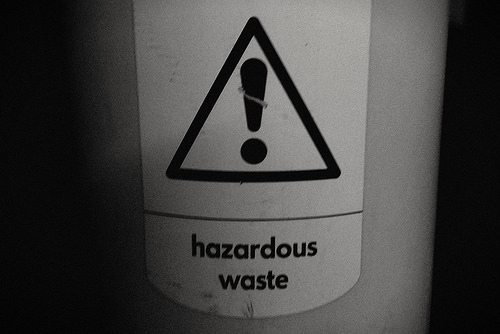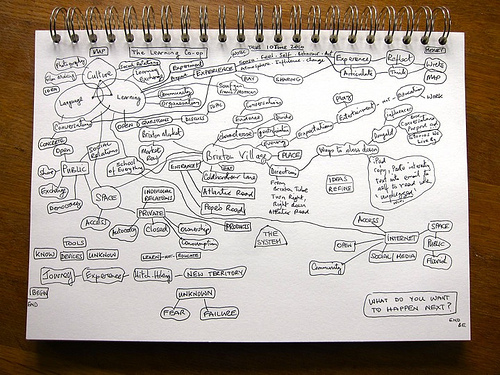
It sounds like such a simple question, but most people have a hard time answering it.
Ask 10 people on the street where their most creative ideas come from, and you’ll get 10 different responses. Your answer is also probably different than mine, or the next person’s who reads this.
Some people credit reading or brainstorming. Others chalk it up to exercise, dreams, or being struck by those eureka moments in the shower.
Good ideas are the lifeblood of an innovative, sustainable business. The ability to generate lots of them might look like magic, but there are plenty of things you can do today to become more creative.
Keep reading to find out how!
It’s Easy to Ignore Just How Important Ideas Are
A solid work ethic will take you a long way…
But combining that work ethic with groundbreaking new ideas will launch you to the top of your field. It will establish you as a true authority, and it’ll keep your work fulfilling as you evolve.
You probably had a barrage of ideas when you just got started with freelancing or entrepreneurship. Unfortunately, once the “new car smell” of a business wears off, it’s easy for the importance of a steady influx of ideas to fall by the wayside.
Instead of innovating or thinking big, you get bogged down in the day-to-day grind of emails, invoices, and deadlines.
Handling those things are essential, of course. But taking a little time each day to flex your idea muscle will help you address the frustrating problems you keep running into. It’ll also help you innovate new products and services to better serve your customers.
The Problem with Trying to Force Creativity
You can force yourself to work harder, but have you ever tried to force yourself to be more creative?
It can be an incredibly frustrating experience.
You need fresh ideas to come—fast. But you just don’t know how to find them. In the past, it always seems like the best ideas found you. They’re like cats; they run away when you chase them.
It doesn’t help that, all around us, there always seem to be a few “geniuses” out there who effortlessly generate ideas without breaking a sweat!
Good news: you can have what they have. All it takes is a bit of practice.
How to Prime Your Mind for More Ideas
You can’t force good ideas to pop into your mind on command…
But you can create a fertile environment for new ideas to come to you. With some careful attention and a willingness to put your best ideas into action, you can revolutionize your business.
These seven steps will help:
1. Ditch the Toxic Mindset
Photo Credit: Kevin Doncaster
A lot of people think creativity is like height. It’s just something you’re born with. You either have it… or you don’t.
This couldn’t be further from the truth!
How many times have you heard someone say “I’m just not a creative person”?
How many times have you said it yourself?
It’s so tempting to view creative people—the artists, designers, and painters—as almost a different species. But seeing yourself outside that group limits your potential to come up with great new ideas.
No matter our field, all of us have the ability to be extremely creative. We can put new spins on old ideas, brainstorm, and find innovative ways to solve problems… if our minds are open to the possibilities.
So now’s the time to take an honest look at your mindset. Drop the toxic one and replace it with “I have the potential to be creative too.” Then try the other steps below and prove it to yourself!
2. Gather the Raw Material (and Never Stop)
Photo Credit: Shenghung Lin
A sculptor can’t create without something to work with, whether it’s bronze or marble or clay.
The same goes for you. The best new ideas spring out of a wealth of raw material: things you’ve read, seen, and experienced.
Consider this. Most people have the wrong idea about what it takes to get a great idea. They assume that it has to be something completely novel—something that’s never been done before—to qualify.
This puts on a ton of pressure. It’s really difficult to pull it off, so you end up frustrated and write yourself off as an uncreative person.
But the most powerful application of creativity is the combination of existing ideas!
James Webb Young, in his book A Technique for Producing Ideas, defines it like this: “An idea is nothing more nor less than a new combination of old elements.”
Instead of trying (and failing) to come up with something the world has never seen, you’re better off building a wealth of knowledge and experience.
If you’re trying to solve a specific problem within your niche, gather as much information and feedback about it as you can. But don’t stop there. Read widely, in fields well outside your own. Say yes to new experiences, travel, and always continue to learn.
The more “raw material” you have, the easier it is to make connections and find creative new ideas you can apply to the specific challenge at hand.
3. Make Time to Relax
Photo Credit: BLMOregon
You can chain yourself to your desk and hammer out some work to meet a tight deadline, but creativity works differently.
It’s fickle. You can’t always force it in high-pressure situations.
Some of our most creative ideas come when we’re relaxed—when we’ve taken a break from our stressful schedules. This explains why the eureka moment in the shower is so common it’s a stereotype!
Instead of thinking about your specific problem so intensely, find ways to relax and disengage. Some of your best ideas will come away from your desk. In the shower. Out on a jog or walk. While you’re curled up in bed.
In its purest sense, creativity is just allowing your brain to play. So make time to disengage from the intense, logical thinking that dominates the workday. Physical exercise is a must, and yoga and meditation can really help clear your mind.
It’s amazing how when you slow down you can hear the creative voice in your head. And that voice has probably been there all along; it just usually gets drowned out when you’re preoccupied and stressed.
4. Work Quickly so You Don’t Over-Think Things
Photo Credit: KRISTY FOX
The problem of analysis paralysis is very real, and it’s only becoming harder as more content appears online. It’s easy to spend months just reading business advice without ever actually doing anything.
Strategic thinking is a must to build your business, but there’s a fine balance. Over-thinking a decision is just as much of a problem as not thinking at all! Plus, it can completely stifle your creativity.
Some of the most creative comedians and musicians are at their best when they’re improvising, or making things up as they go along. This helps them bypass rational thought (which is often critical) and tap into the intuition they’ve built up over years of practice. It pulls them into a state of flow.
You can boost your own creativity by “improvising” in a similar way.
Ask yourself questions like, “How could I meet my revenue goals 20% faster?”
Try giving yourself less time to write that next email or blog post. Set aggressive deadlines. Giving yourself a little less (but not too much less) time than you think you need helps you avoid becoming a victim of Parkinson’s law.
You might be amazed at the quality—and creativity—of the finished product. Your mind has an incredible ability to find solutions to problems. A lot can come from simply outrunning the internal editor or critic, getting it out of the way instead of letting it intrude on your process.
5. Embrace Constraints
Photo Credit: Xynalia
Most of the best ideas don’t come from an unlimited pool of time and resources. Instead, they find ways to do more with less.
Constraints can seem like obstacles, but they actually help give you a clearer path to success. It’s much harder to “design a new product” than “design a new product for under $500 that taps into my existing web development skills.”
These guidelines give your mind plenty of room to play. Just ask Austin Kleon, a famous author who created a book of poetry just by blacking out certain words from newspaper articles. Or Dr. Suess, who wrote the all of Green Eggs and Ham using just 50 words.
Stop obsessing about what else you need in order to succeed. Instead, ask yourself how you could do less and get the same (or even better) results.
How could you cut your product line in half… and still make more money than last month?
Could you reach more people by spending less time on marketing?
These types of questions empower your mind to be its most creative. By encouraging your mind to be resourceful, you’ll come up with all kinds of ideas you’ve never considered before.
6. Develop a System to Collect Your Ideas
Photo Credit: tonyhall
Forgotten ideas don’t do you any good.
You need a way to collect them. Just the act of documenting the idea will help anchor it in your mind. Plus, you’ll be able to go back through your notes whenever you want and notice interesting new connections.
There are tons of different ways you can do this. Some people like a simple notebook with pen and paper. Others use index cards or digital apps like Evernote. Your system can be as simple or complicated as you want it to be… as long as you use it consistently!
One more thing to keep in mind. Because many of your best ideas will come when you’re away from the desk, make sure your idea collection process has a way to grab ideas when you’re on the go.
7. Practice Every Day
Photo Credit: Dafne Cholet
You can’t force yourself to come up with good ideas on the fly, but you can brainstorm a few ideas every day.
I picked up this idea from James Altucher, a popular blogger and author of books like Choose Yourself.
James’s recommendation?
Write down 10 new ideas every single day.
Don’t worry about them not being good enough. This shouldn’t be a stressful process. Just get them down on the page.
The thought is that, just by forming the habit of consistently coming up with ideas, you’re more likely to get to the good ones. You become an “idea-generating machine.”
There aren’t any set guidelines, but it’s fun to give the ideas for each day a theme. Today might be “10 ways to lose weight.” Tomorrow might be “10 new services I could offer my clients.” And so on.
Do this for a year, and you’ll end up with a staggering 3,650 ideas!
Think about that for a second. Even if just one percent of those ideas strike you as good, you’ll have 36 of them to work with. It only takes one to completely change your life.
Finding the Insights You Need to Succeed
You can’t chase down ideas at will, but if you follow the seven steps above, you won’t have to:
Good ideas will come to you in droves.
If you’re tired of being stuck in a rut, exhausted by the same old problems and feeling powerless to innovate, it’s time to shake things up. Seize your best ideas. Apply them, and watch how your business transforms before your eyes.








